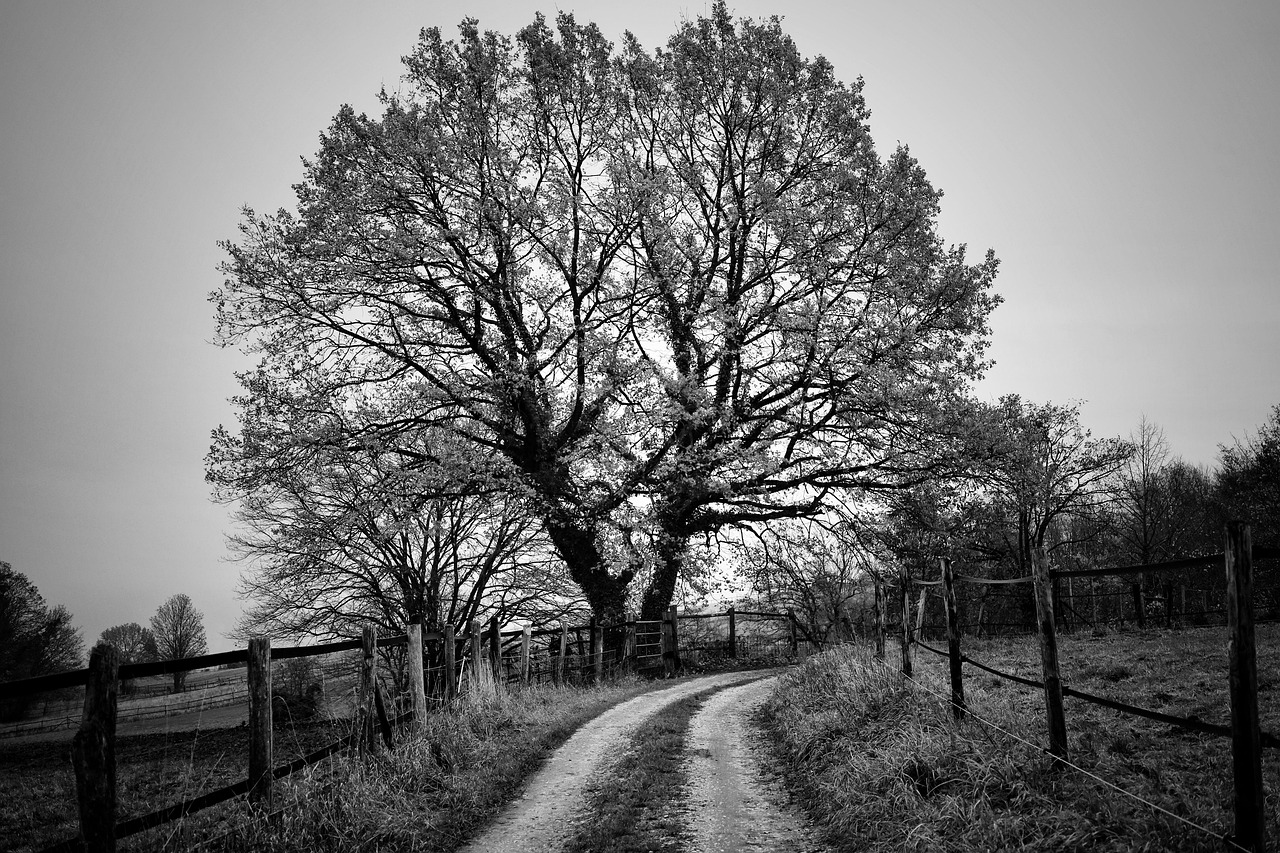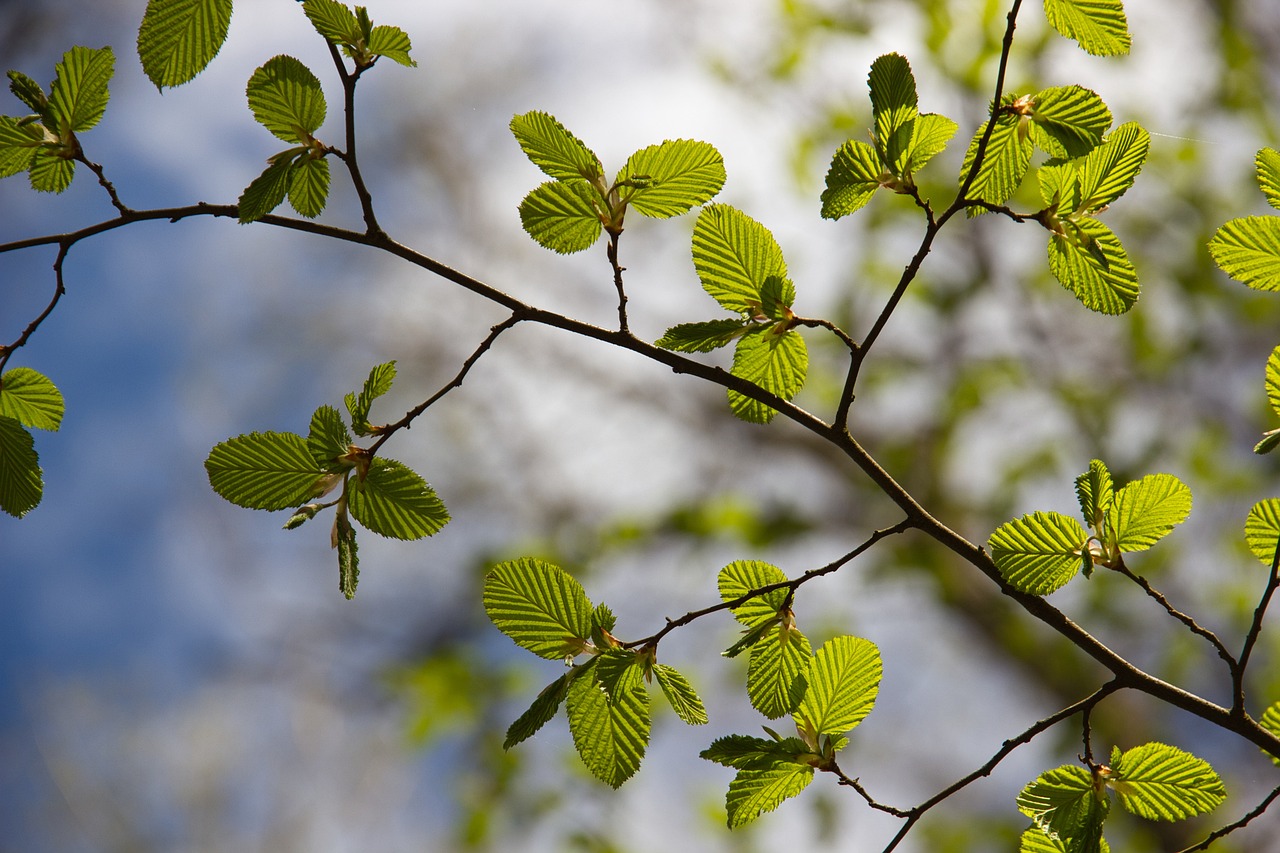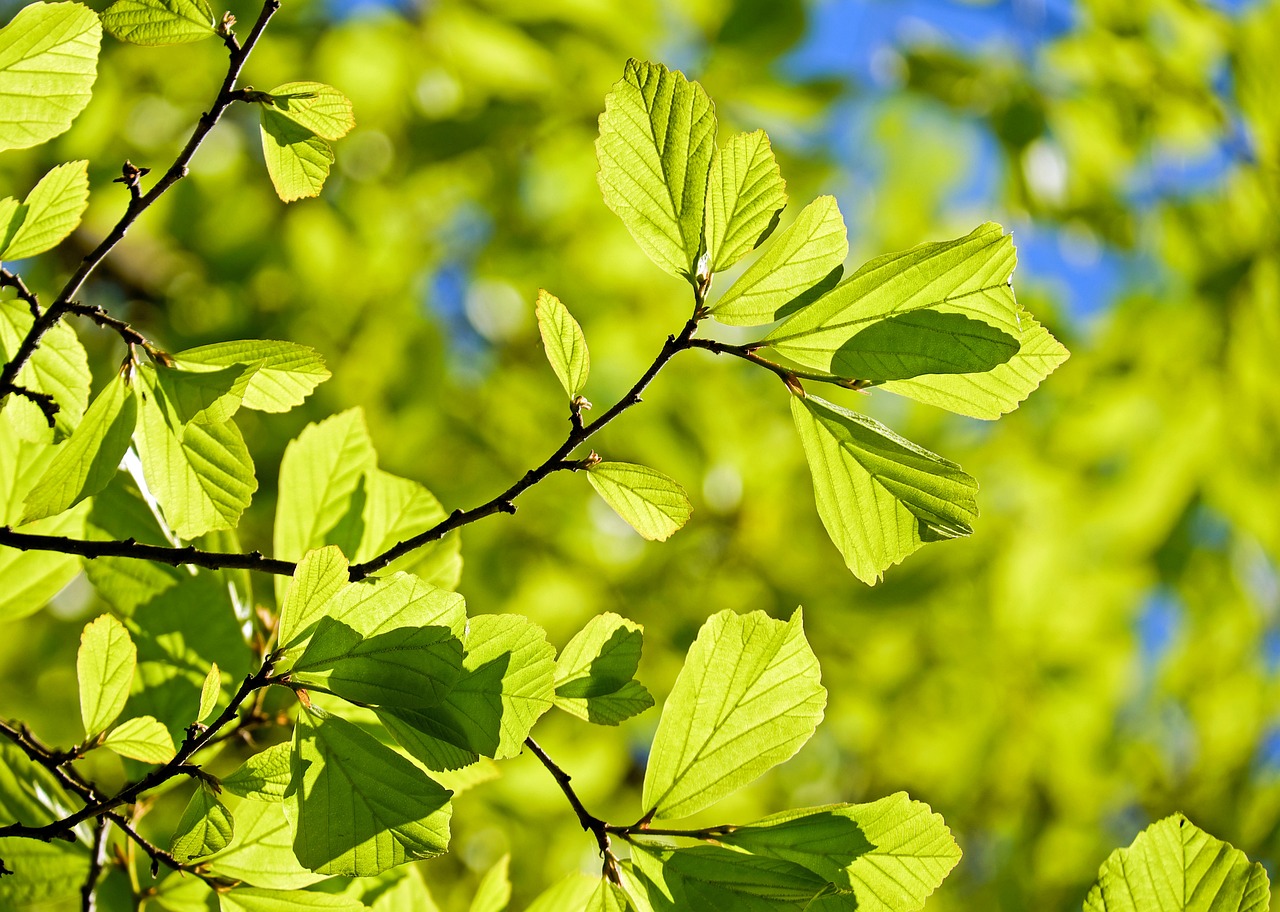Deciduous trees typically exhibit a moderate to fast growth rate, with many species growing between 1 to 3 feet per year. This growth influences the timing and vibrancy of seasonal leaf color changes, which are affected by factors such as temperature, light, and soil conditions.
Deciduous trees are unique in their ability to shed leaves seasonally. This characteristic not only impacts the ecosystem but also plays a crucial role in the visual landscape throughout the year. The growth rate of these trees significantly affects when and how their leaves change color, creating stunning displays during autumn. Understanding this relationship is essential for gardeners, landscapers, and environmentalists alike.

The growth rate of deciduous trees varies among species. Some trees, like the Red Maple and Silver Birch, are known for their fast growth, while others, such as oaks, may grow more slowly. The rate at which these trees grow can influence their physiological processes, including photosynthesis and nutrient uptake, which in turn affect leaf color development.
Factors Influencing Growth Rate
Several factors can affect the growth rate of deciduous trees. These include soil quality, climate conditions, water availability, and tree species. Each of these elements plays a vital role in determining how quickly a tree can reach maturity and how vibrant its autumn colors will be.
| Factor | Impact on Growth Rate |
|---|---|
| Soil Quality | Rich, well-draining soil promotes faster growth. |
| Climate Conditions | Warm temperatures and adequate sunlight accelerate growth. |
| Water Availability | Consistent moisture supports healthy growth rates. |
| Tree Species | Some species naturally grow faster than others. |
The interplay between these factors creates an environment that can either enhance or limit the growth of deciduous trees. For example, a tree planted in nutrient-poor soil may struggle to grow as quickly as one in fertile ground. Similarly, trees that receive ample sunlight tend to develop more rapidly than those in shaded conditions.

Seasonal Leaf Color Changes
The process of leaf color change in deciduous trees is primarily driven by the breakdown of chlorophyll as temperatures drop in autumn. This allows other pigments within the leaves to become more visible. The timing and intensity of this color change can be influenced by the growth rate of the tree.
Fast-growing deciduous trees often have a shorter time frame to prepare for winter. As a result, they may display vibrant colors sooner than slower-growing species. In contrast, trees that grow more gradually may take longer to reach their full color potential. This seasonal transformation can be affected by various environmental conditions:
- Temperature: Cooler nights can enhance red and purple hues.
- Sunlight: More sunlight exposure can lead to brighter colors.
- Soil Moisture: Adequate moisture can intensify color vibrancy.
The interaction between tree growth rates and seasonal color change is crucial for landscape design and ecological balance. Trees that exhibit rapid growth may contribute to quicker visual changes within an environment, creating dynamic landscapes throughout the seasons. Conversely, slower-growing species can provide stability and continuity in seasonal aesthetics.

In conclusion, understanding the growth rates of deciduous trees and their influence on seasonal leaf color is important for both horticultural practices and environmental awareness. By appreciating these relationships, individuals can make informed decisions about planting and maintaining these beautiful trees in various settings.
Growth Rate Variations Among Common Deciduous Trees
Understanding the growth rates of specific deciduous tree species can provide valuable insights into their potential impact on seasonal leaf color. Different species exhibit unique growth patterns, which can affect how quickly they reach maturity and display vibrant autumn colors. Some common deciduous trees include:
- Red Maple (Acer rubrum): Known for its rapid growth, this tree can grow up to 3 feet per year under optimal conditions.
- Silver Birch (Betula pendula): Another fast-growing option, the Silver Birch can also reach growth rates of around 2 to 3 feet annually.
- White Oak (Quercus alba): This slower-growing tree averages about 1 foot per year but produces stunning leaf colors in fall.
- Sweetgum (Liquidambar styraciflua): With a growth rate of 1 to 2 feet per year, it showcases a variety of colors from yellow to purple in the autumn.
The growth rates of these trees can vary significantly based on environmental conditions and care practices. Understanding these variations can help gardeners and landscapers select the right species for their needs.

Impact of Growth Rate on Leaf Color Intensity
The growth rate of a deciduous tree directly influences the intensity and timing of its leaf color change. Fast-growing trees tend to produce more chlorophyll during the growing season, which can result in a more dramatic shift in color when chlorophyll breaks down in the fall. Conversely, slower-growing trees may not accumulate as much chlorophyll, leading to subtler color changes.
This relationship can be summarized as follows:
| Growth Rate | Chlorophyll Production | Color Change |
|---|---|---|
| Fast | High | Dramatic and vibrant |
| Medium | Moderate | Balanced colors |
| Slow | Low | Subtle changes |
Environmental Influences on Growth Rates
The growth rates of deciduous trees are influenced by various environmental factors. Recognizing these influences can help in creating optimal conditions for tree growth and enhancing their seasonal color displays.
Soil Quality and Composition
The type and quality of soil play a crucial role in determining how well a deciduous tree will grow. Well-drained, nutrient-rich soils support faster growth rates. Key soil components that influence tree growth include:
- Nitrogen: Essential for leaf and stem development.
- Phosphorus: Important for root development and energy transfer.
- Potassium: Aids in overall plant health and disease resistance.
A soil test can guide amendments to create an ideal growing environment for selected tree species.
Climate and Weather Conditions
The local climate significantly affects the growth rate of deciduous trees. Factors such as temperature, precipitation, and sunlight exposure must be considered:
- Temperature: Warm temperatures during the growing season promote faster growth.
- Precipitation: Adequate rainfall ensures trees receive sufficient water, essential for nutrient uptake.
- Sunlight: Full sun allows trees to perform photosynthesis efficiently, enhancing growth rates.
Trees planted in areas that experience extreme weather may exhibit slower growth due to stress factors like drought or frost damage.
Caring for Deciduous Trees to Enhance Growth
Caring for deciduous trees properly can significantly impact their growth rates and subsequent seasonal leaf color changes. Here are some best practices to consider:
- Regular Watering: Ensure consistent moisture, especially during dry spells. Deep watering encourages deeper root growth.
- Nutrient Management: Apply fertilizers based on soil tests to provide essential nutrients.
- Pest and Disease Control: Monitor trees regularly for signs of pests or diseases that could hinder growth.
- Pruning: Regular pruning helps remove dead or crowded branches, allowing better air circulation and light penetration.
Implementing these practices can lead to healthier trees that grow faster and display more vibrant colors during the autumn months.
Tree Selection for Optimal Growth and Color
Selecting the right deciduous tree species is crucial for achieving the desired growth rate and vibrant autumn colors. Some species are inherently better suited to specific climates and soil types, which can enhance their growth potential. Here are some considerations for choosing the right trees:
Climate Adaptability
Understanding the native climate of a tree species can help ensure its success in your garden or landscape. Some trees thrive in specific temperature ranges and humidity levels, making them more likely to grow optimally.
- Hardiness Zones: Familiarize yourself with the USDA Plant Hardiness Zone Map to choose trees that are appropriate for your local climate.
- Temperature Tolerance: Trees native to warmer climates may struggle in colder areas and vice versa.
- Precipitation Needs: Consider the average rainfall in your region when selecting trees.
Soil Type Compatibility
The type of soil in which a tree is planted can greatly affect its growth rate. Different species have varying tolerances to soil conditions, including texture, pH, and drainage capabilities.
- Clay Soil: Trees like Black Gum (Nyssa sylvatica) and River Birch (Betula nigra) do well in heavier clay soils.
- Sandy Soil: Species such as Eastern Red Cedar (Juniperus virginiana) thrive in well-drained sandy soils.
- Silty Soil: Trees like American Sycamore (Platanus occidentalis) prefer rich, silty soils that retain moisture.
Common Deciduous Trees and Their Characteristics
Familiarizing yourself with various deciduous tree species can guide you in selecting those that will meet your landscape needs while also providing beautiful fall colors. Below are several popular options:
| Tree Species | Growth Rate | Fall Color | Optimal Soil Conditions |
|---|---|---|---|
| Red Maple (Acer rubrum) | Fast (2-3 feet/year) | Brilliant red and orange | Moist, well-drained soils |
| Sugar Maple (Acer saccharum) | Moderate (1-2 feet/year) | Vivid yellow, orange, and red | Rich, well-drained soils |
| Sweetgum (Liquidambar styraciflua) | Moderate (1-2 feet/year) | Yellow, purple, red | Well-drained, slightly acidic soils |
| White Oak (Quercus alba) | Slow (1 foot/year) | Red to russet | Well-drained sandy loam |
This table outlines some characteristics of popular deciduous trees, focusing on their growth rates, fall colors, and soil preferences. Making informed choices based on these factors can lead to healthier trees that contribute to stunning autumn displays.
The Role of Pruning in Growth and Color Enhancement
Pruning is a critical aspect of tree care that can significantly impact both growth rates and seasonal color vibrancy. Properly executed pruning helps maintain tree health and shape, allowing for better light penetration and air circulation.
Benefits of Pruning
- Improved Airflow: Thinning the canopy allows better airflow, reducing the risk of diseases that can hinder growth.
- Increased Sunlight Exposure: Pruning can enhance light penetration to lower branches, promoting uniform leaf color development.
- Aesthetic Shape: Regular pruning helps maintain a desirable shape, improving the overall appearance of the tree throughout the seasons.
Pruning Techniques
Different pruning techniques can be applied depending on the age and type of tree. Some common methods include:
- Crown Thinning: Selectively removing branches to reduce density in the crown.
- Crown Raising: Removing lower branches to increase clearance.
- Crown Reduction: Reducing the size of the tree while maintaining its natural shape.
Understanding these techniques can empower gardeners and landscapers to effectively manage deciduous trees, leading to healthier growth rates and more vibrant fall colors.
Environmental Considerations for Deciduous Trees
In addition to selecting appropriate species and implementing proper care techniques, understanding the broader environmental context is vital for enhancing the growth rates of deciduous trees. Several ecological factors can significantly influence both growth and seasonal leaf color.
Microclimates
Microclimates refer to localized atmospheric zones where the climate differs from the surrounding areas. These variations can be caused by natural features like hills, lakes, or human-made structures. Recognizing microclimates in your planting area can help you choose tree species that will thrive. Here are some aspects to consider:
- Sun Exposure: Areas that receive full sun will support faster growth compared to shaded spots.
- Wind Patterns: Windbreaks can help protect trees from harsh winds, supporting healthier growth.
- Soil Moisture: Low-lying areas may retain moisture longer, favoring certain tree species.
Companion Planting
Companion planting involves strategically placing different plant species together to enhance growth and deter pests. Some trees can benefit from a carefully planned companion planting arrangement, which can improve overall health and vibrancy. Consider the following companions for deciduous trees:
- Herbs: Plants like basil or mint can repel harmful insects while providing nutrients.
- Flowering Plants: Marigolds and nasturtiums can attract beneficial pollinators, enhancing overall garden health.
- Ground Covers: Species like clover can improve soil nitrogen levels, benefiting nearby trees.
The Role of Technology in Tree Care
Advancements in technology have provided new tools and methods for monitoring tree health and enhancing growth rates. Here are a few innovative approaches that can aid in tree care:
Smart Irrigation Systems
Smart irrigation systems utilize sensors to monitor soil moisture levels. This technology ensures that trees receive the right amount of water without over- or under-watering, promoting optimal growth conditions throughout the seasons.
Soil Health Monitoring
Soil testing kits and mobile apps allow gardeners to assess soil pH, nutrient levels, and other vital components. This information enables more informed decisions regarding fertilization and soil amendments, ultimately improving tree health and growth rates.
Final Thoughts
Understanding the growth rates of deciduous trees is essential for creating vibrant landscapes that showcase stunning autumn colors. By considering factors such as species selection, environmental conditions, soil quality, and proper care techniques, individuals can cultivate healthy trees that thrive in their specific settings.
The impact of deciduous tree growth on seasonal leaf color is a fascinating interplay of biology and environment. Fast-growing species tend to display more dramatic color changes, which can enhance the visual appeal of any garden or landscape. Conversely, slower-growing trees can offer stability and continuity throughout the seasons.
In conclusion, whether you are a homeowner looking to beautify your yard or a professional landscaper aiming to create stunning outdoor spaces, understanding deciduous tree growth rates and their impact on seasonal leaf color is crucial. With informed choices and proper care practices, you can enjoy the breathtaking beauty that these trees bring to our environments year after year.
